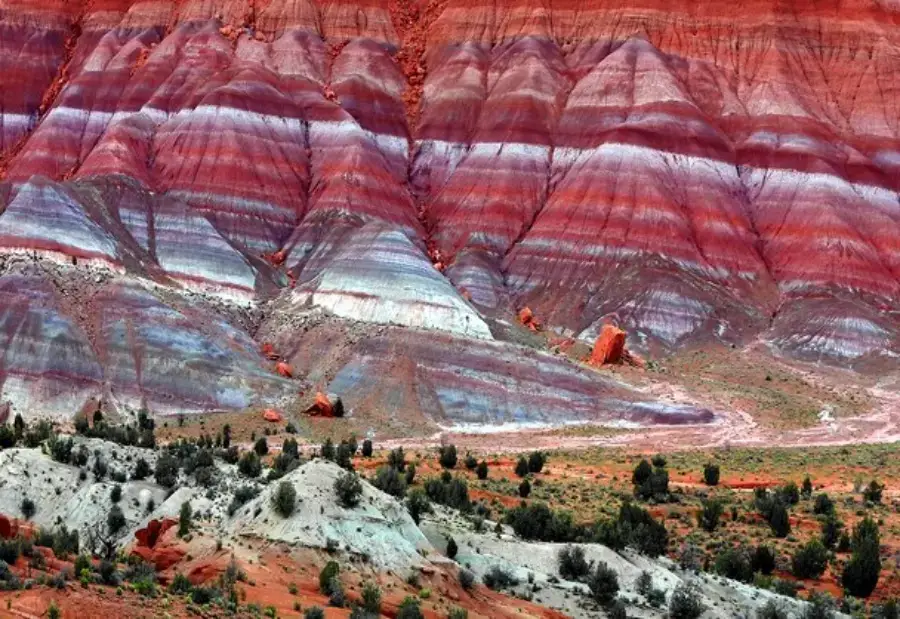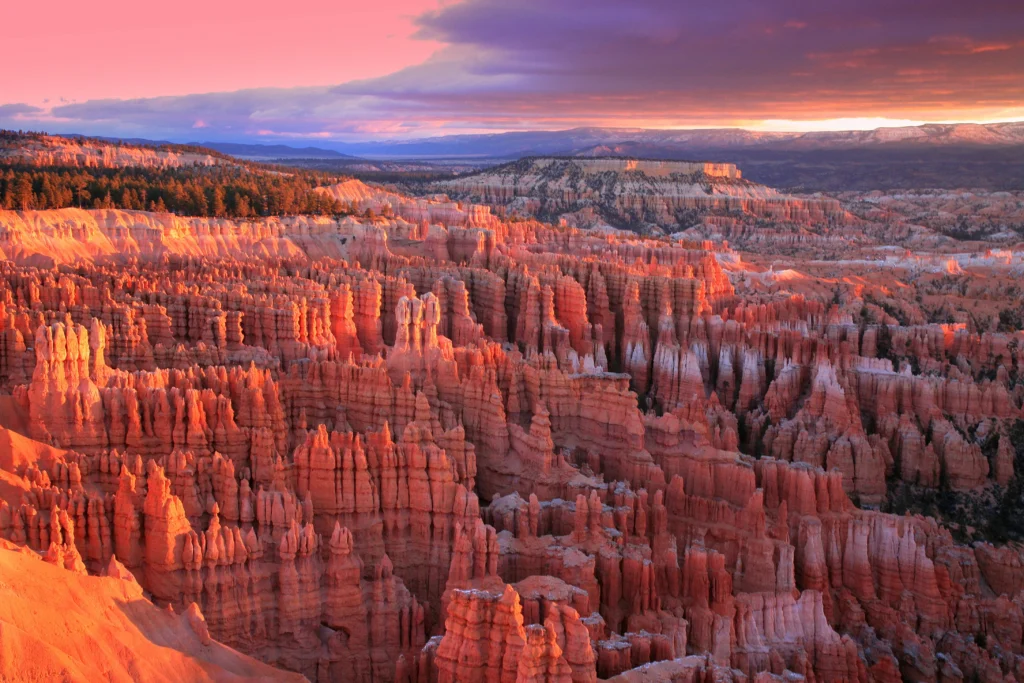Utah is home to some of the most stunning and colorful rock formations in the United States. From vibrant red cliffs to brilliant yellow and orange layers, the state’s geological wonders captivate nature lovers and photographers alike. Here’s a closer look at these incredible natural marvels and what makes them so unique.

A Geological Wonderland
Utah’s colorful rocks are a result of millions of years of geological processes. The state boasts a diverse range of rock types and formations, including sandstone, limestone, and granite. The vibrant colors you see are primarily due to the oxidation of minerals within the rocks. Iron oxides, for example, can create striking reds and oranges, while manganese may produce purples and blacks.
Notable Locations
- Arches National Park: Famous for its natural stone arches, this park features stunning red and orange sandstone formations. The contrast between the bright rock and the deep blue sky is simply breathtaking, especially during sunrise and sunset.
- Bryce Canyon National Park: Known for its unique hoodoos (tall, thin spires of rock), Bryce Canyon presents a mesmerizing display of colors. The rock layers, primarily composed of limestone, are rich in iron, creating hues of red, orange, and pink that shift in the light.

The Science Behind the Colors
The variety of colors in Utah’s rocks is attributed to several factors:
- Mineral Content: The presence of different minerals leads to various colors. For instance, iron gives the red and yellow hues, while organic material can create dark shades.
- Weathering and Erosion: Over time, the forces of wind and water have sculpted the landscape, exposing different layers of rock and revealing their vivid colors.
- Sunlight: The angle and intensity of sunlight can dramatically alter the perception of color in the rocks, making them appear even more vibrant during certain times of the day.
Cultural Significance
These colorful rocks are not only a geological wonder but also hold cultural significance. Many Native American tribes, including the Navajo and Hopi, have deep connections to these lands, which they consider sacred. The stunning formations are often featured in their art, stories, and traditions.
Visiting the Colorful Rocks
If you’re planning a trip to see Utah’s colorful rocks, consider visiting during the spring or fall when temperatures are mild, and the crowds are smaller. Don’t forget to bring your camera to capture the breathtaking vistas and vibrant colors that make Utah a truly unique destination.
In conclusion, the colorful rocks of Utah are a testament to the beauty and complexity of our planet’s geology. From their striking appearances to their rich cultural significance, these formations offer something for everyone to appreciate. So, get out there and explore this colorful wonderland!

